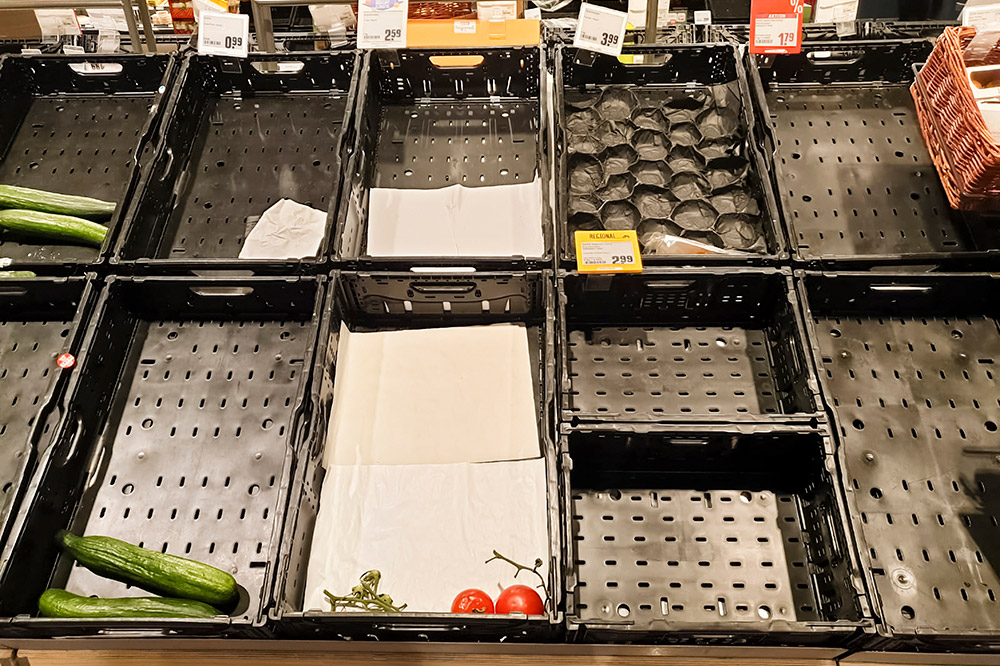RIT supply chain faculty use impact of COVID-19 as real-world learning opportunity
Saunders College supply chain experts use pandemic to talk about challenges in manufacturing, distribution and consumer purchasing
Faculty members in RIT’s supply chain management program in Saunders College of Business are using the global impacts of COVID-19 on manufacturing and distribution of goods as a teaching tool.
The devastating impact of COVID-19 on national and global supply chains is being studied by experts all over the world. It has also presented research opportunities for supply chain professors in Rochester Institute of Technology’s Saunders College of Business and created a robust discussion between RIT students and faculty.
Assistant Professor Steven Carnovale and his colleagues study trends and developments in the logistic industry. Based on their research, they created the Logistics Managers’ Index, which uses logistics metrics such as transportation, warehousing and inventory to predict potential movements in the economy. Carnovale drew upon this research to explain to students the impact of COVID-19-related supply chain issues.
“At the point where COVID-19 became a global phenomenon, I was able to relay to the class how supply chain is the center of gravity when it comes to sourcing, manufacturing and distribution. Everything is interrelated,” said Carnovale, who teaches Supply Chain Fundamentals, an A to Z understanding of how supply chain works. “COVID-19 is inducing a bull-whip effect where manufacturing decisions, the demand for supply, and disorganization results in one of the most common problems in supply chain management.”
Carnovale and his colleagues tweaked their curriculum to reflect what balances the flows of inbound and outbound materials, how manufacturers have had to move facility operations to domestically based operations, and how companies are reconsidering sourcing decisions in the midst of COVID-19.
“In the recession of the early ’90s, retailers kept about 60 days of inventory, which is a lot of inventory,” he explained. “COVID-19 created a giant supply chain disruption and the inflow of materials essentially stopped. As a result, it’s important for our students to understand topics like the total cost of ownership, pricing of products and shipping, supplier discounts, the impact of moving operations domestically, and NAFTA, which is conducive to trade.”
Zhi Tang, professor and graduate program director in Saunders College, stresses that while COVID-19 has made the world realize the risks involved in supply chain management, faculty members have always taught students to recognize patterns and disruptions and to be integrated team members who are involved all the way from supply chain planning to understanding and mitigating risks.
“We are consistently creating data-driven decision makers who understand strategy,” said Tang. “The courses that we offer are designed to face the new, long-lasting challenges of supply chain. We aren’t simply being reactive. Our response is based on the assessment of faculty and industry partners that COVID-19 has likely upended the traditional notion of how supply chain was managed. So, the changes in the curriculum are responsive to these changes.”
Ironically, just before COVID-19 became a global pandemic, logistics and supply chain challenges were discussed with corporate partners and advisory board members from CooperVision, Constellation Brands and Wegmans. These companies and others have provided insight on the formation of the supply chain curriculum, including the development of relevant courses and capstone projects that embed planning and resolutions into learning.
Added Tang: “COVID-19 is unlike anything that our generation of students have faced. This event has created a great opportunity to study supply chain management, which can position them for a successful career post COVID-19.”
Saunders College is launching a master’s degree in global supply chain management this year.













